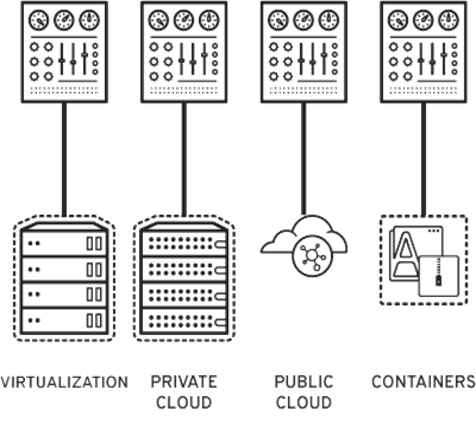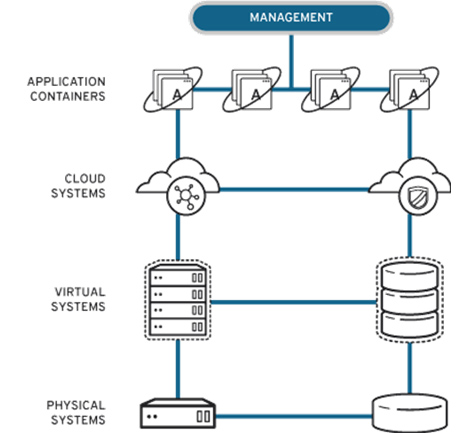Virtualization management is software that interfaces with virtual environments and the underlying physical hardware to simplify resource administration, enhance data analyses, and streamline operations. Each virtualization management system is unique, but most feature an uncomplicated user interface, streamline the virtual machine (VM) creation process, monitor virtual environments, allocate resources, compile reports, and automatically enforce rules. Some solutions even integrate across hardware and software brands—allowing users to install the management system that’s best for them.
What is Virtualization Management?
DSHB Consulting
When to Use Virtualization Management Software
Depending on how big and diverse your environments are, how experienced your IT team is, and what your strategic goals are, virtualization management software might make your life a lot easier. Sure, a single system administrator can manually manage a handful of virtual machines (VMs) fired up on a single workstation, but large enterprise-wide deployments use virtualization management software to help their systems be successful. That’s because VMs aren’t just provisioned automatically when hypervisors are installed—someone needs to tell the software what to do. That usually includes a combination of 4 responsibilities, which multiply each time a new VM is fired up. Think of it in these four components: Provisioning, processing resource requests, creating templates, and configuring VMs.
- Compliance – Securing and monitoring systems, identifying issues, and validating user access.
- Operations – Retiring or reclaiming unused or underused physical resources, investigating bugs, and projecting future needs.
- Hybrid unification – Implementing the other 3 responsibilities across virtual, private cloud, public cloud, and container environments.

Traditional virtual environments are pretty straightforward—they contain physical hardware and VMs. But even these can get unwieldy if there are too many instances.
Imagine working at a large hotel, where you’re not only responsible for solving major maintenance issues but also have to make sure the lights are off, doors are locked, and water isn’t left running in each room. These are simple tasks that can become really, really time consuming. It’s a situation that leaves you with 2 choices:
- Check the empty rooms, leaving you little time to solve larger problems
- Solve the larger problems, leaving you little time to check empty rooms
What if outlets, faucets, and locks were synced to an app that automatically turned the lights off, locked the doors, and checked pipe flow in empty rooms after guests checked out? It would save you from climbing every step, traversing every long hallway, and opening every door just to perform a few simple tasks—freeing you to solve major maintenance issues that can’t be automated.
In this analogy, every room is a VM. When simple maintenance tasks are spread across hundreds of instances, it becomes unwieldy. Management software can take some of that burden off IT professionals’ shoulders so they can solve big, enterprise-wide problems.


Hybrid environments consist of 2 or more interconnected virtual, containers, private cloud, or public cloud environments. These setups are far more complex than traditional virtual environments, since each responsibility is repeated in its own unique way. Imagine all the parts of a typical entertainment system: TV, cable box, sound system, and a few gaming consoles—each with its own remote. But nobody’s ever said that handling multiple remotes is an ideal situation. Rather, it’s something we just tolerate until we spend the time and money on an app that manages the entire system from 1 interface.
The same goes for hybrid environments: Private clouds are secured differently than public clouds, and commissioning VMs is different than commissioning containers. Pair that with your unique business situation, IT stack, and experience level, and you have a lot to consider when it comes to choosing the right management tools. But the right tools do exist, and the best of them unify heterogeneous environments in a vendor-neutral and scalable solution—giving IT admins greater efficiency without increasing operational expenses.


